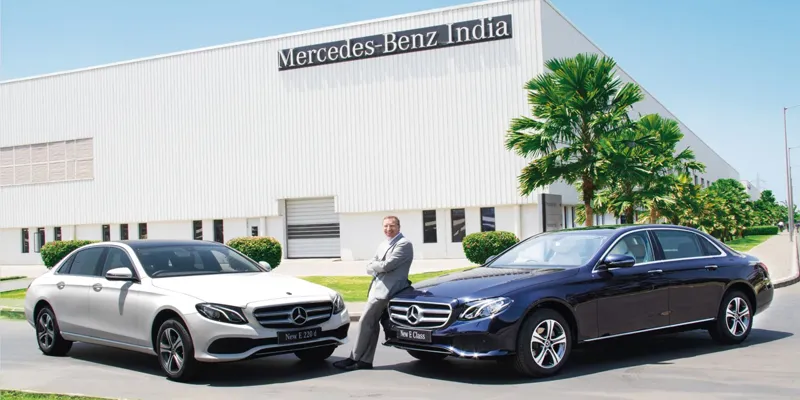Indian consumers treat luxury products differently: Mercedes-Benz India CEO
Mercedes-Benz India MD and CEO, Martin Schwenk, says the Indian consumer’s behaviour and usage when it comes to luxury items is different from other markets.
India’s top luxury carmaker, Mercedes-Benz, also happens to be the longest-running luxury car brand in the country. The iconic Stuttgart-based auto giant set up shop in India in 1994. It has a dominant market share of around 40 per cent in the luxury car market in India, with BMW, another German auto major, as its closest rival. Having been in the country for over a quarter of a century, Mercedes-Benz India has studied Indian consumer behaviour closely.
“They (Indian consumers) look for value for money and that's even in a high-end product. So we have to make sure that whatever we offer really creates that value for money and that's on the one hand the product itself, but it goes into the service, and so on. So it's truly something which we need to do. [sic],” says Mercedes-Benz India Managing Director and CEO, Martin Schwenk.

Mercedes-Benz India MD and CEO Martin Schwenk
He tells YourStory Founder and CEO Shradha Sharma that the long wheelbase (LWB) E-Class offering of the company is a great example of a ‘value for money’ product, which has found “a lot of customers” in India and gone on to become a bestselling model. India and China are the only markets where the LWB E-Class is sold. The car which is priced between Rs 57.5 lakh and Rs 62.5 lakh has been the major volume driver for Mercedes-Benz India. It is, in fact, the longest car in its segment with a wheelbase of 3079 mm, which translates into space on the inside, both in the front and at the back. The German automaker has sold over 41,000 units of the E-Class in India.
Different usage
The usage in India is also different compared to other markets, highlights Martin. Many in India prefer the car to be chauffeur-driven, which automatically shifts the focus to the backseat.
“The driver operated vehicle is more prevalent in India than it is in many other markets. You have to offer them a product, and a communication which takes cognizance of the fact that the owner may be driving the car, maybe 100 per cent, or 20 per cent, or not at all. And that creates a different framework when it comes to the comfort a customer will expect in the second seat row,” Martin explains.

The backseat in India assumes more importance than other countries.
The India boss of Mercedes-Benz also highlights that owing to this unique usage trend in the country, the company has “a strong focus and dedication” towards functionality and comfort in the second seat row, something it has not just achieved with the E-Class sedan but also its SUV (sports utility vehicle) range of GLE and GLS.
Focus on backseat comfort does not mean Mercedes-Benz would compromise on “sportiness and driving attitude” as far as the driver is concerned; after all, it has a century-old image to uphold.
This balancing act makes India a slightly more difficult market, as Martin points out that in most other countries, “you will be fine just having the driver and the passenger seat very well-equipped and in the rear seat you expect a couple of kids or no kids. So that's a different setup and if you have the owner sitting in the back there’ll definitely be different expectations. There are certain Indian specifics which we then obviously implement also in our product lineup.”
Watch video:
In 1994, Mercedes-Benz India started assembling its cars locally from Tata Motors’ premises. In 2009, it established its own manufacturing plant in Chakan near Pune. Its “Made in India” cars are rolled out from this very unit.
The cars manufactured in Pune include the sedans, C-Class, E-Class, S-Class and CLA Coupé as well as Maybach S-Class and the SUVs, GLA, GLC, GLE and GLS. The company plans to launch around 10 models in 2021.








